The Clifton Suspension Bridge in Bristol. Blackpool Tower. The Cenotaph in London. With Historic England’s reassignment of Grade 1 status to The Church of Our Lady and the English Martyrs, one of the largest Catholic Churches now has the high recognition of these marvellous memorials and supreme structures. This Catholic Church is truly a marvel to the traveller, resident, student and peoples of Cambridge. From the Historic England report the building, and three other Churches in the East of England, succeeded to this status for meeting the qualities of significant architectural and historical interest.[1] Our Lady and the English Martyrs is truly deserving of this Grade I listing. For those who share this writer’s journey to work, stomping from Cambridge train station into the city centre, you will pass this magnificent structure of gothic architecture residing on the busy junction of Regent Street and Hills Road. This might be one of the few places in the UK where waiting at a traffic light stop is a true delight, as it allows you the opportunity to appreciate such a beautiful monument.
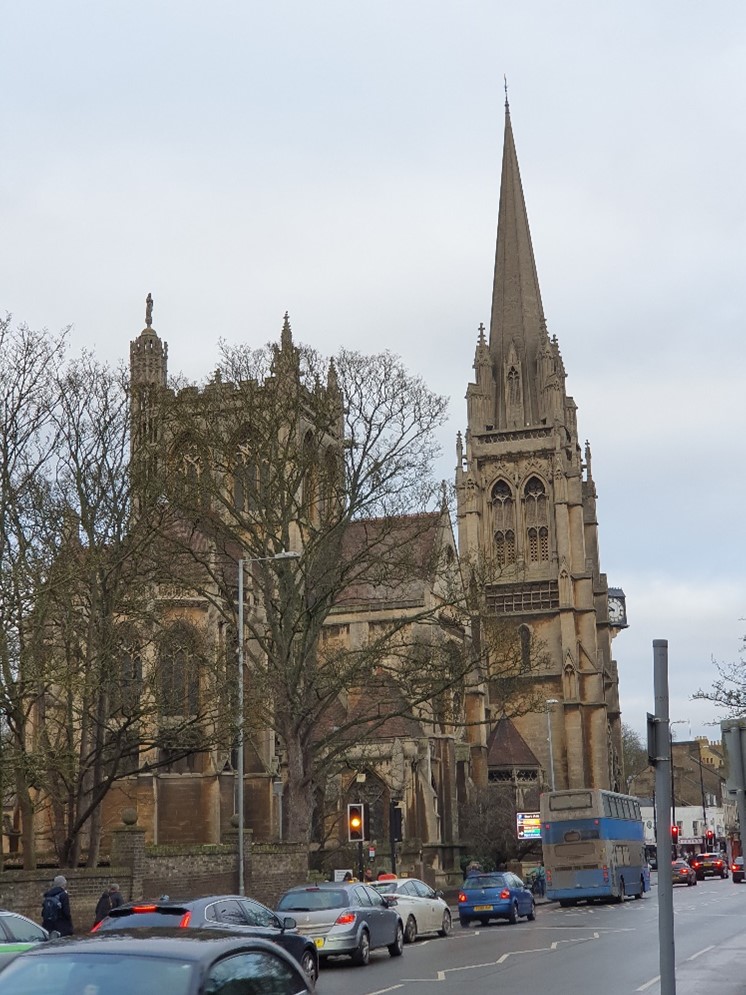
Built at the end of the nineteenth century, it opened its doors on the 15th of October 1890 and has continued to have a presence ever since. Anticipating the opening, the Cambridge Independent Press reported on Saturday 11 October 1890,
The beautiful edifice situated at the corner of Lensfield Road, which has been so long course of erection, was dedicated on Wednesday morning by the Bishop of Northampton… It is now three years since the ceremony of laying the foundation stone was performed … A better site for the Church it would have been impossible to have chosen. It is situated on a slight eminence, and has the advantage of being in the main thoroughfare of the town.
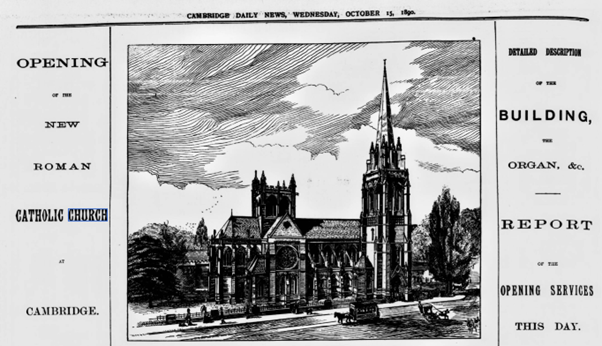
The historical value of Our Lady and the English Martyrs attests to a legacy of promoting and securing the interests of the Catholic community, with hostility ‘still evident locally at the time of its construction’. Despite this tension, the construction of the Church benefitted from the philanthropy of Pauline Duvernay. The Versailles born Duvernay had wowed the audiences of Paris and London, becoming one of the most accomplished ballerinas on stage during the first half of the nineteenth century. It was with her patronage (placed somewhere around a staggering £70,000) that helped to construction one of the largest Catholic Churches in the UK.
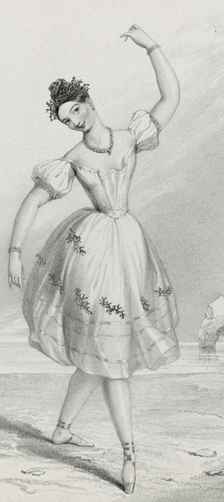
lithograph, circa 1833 NPG D21924; Pauline Duvernay (Yolande Marie Louise de Varnay) – Portrait – National Portrait Gallery
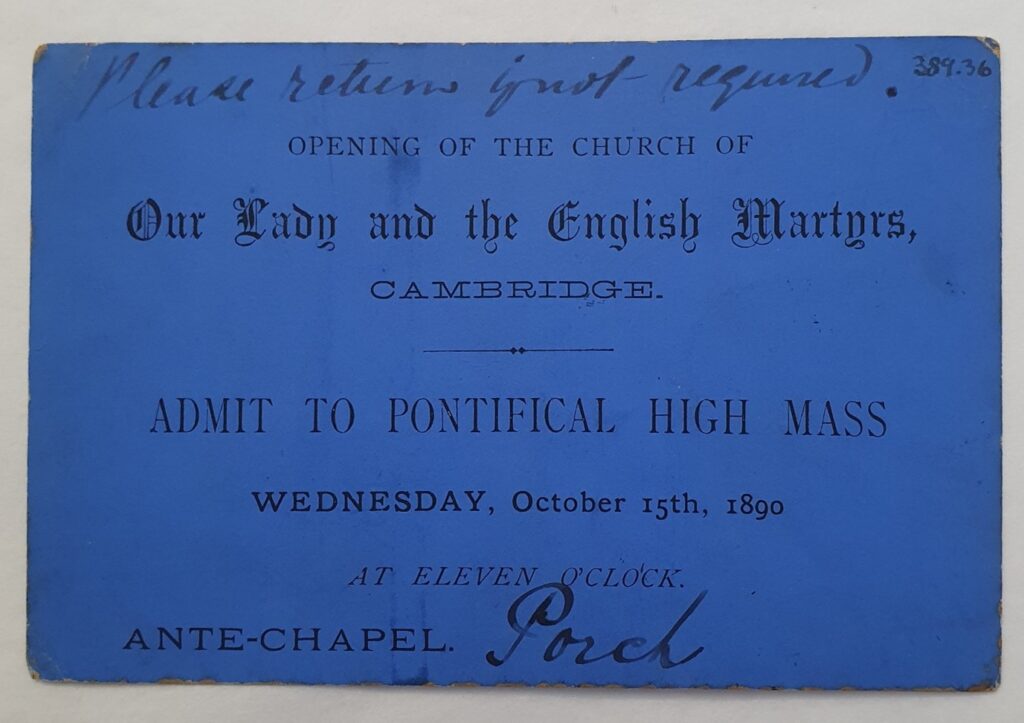
Whilst the completion of a new Roman Catholic Church had sparked something of a war of words in the local press, the grand opening was cordially received. At its opening 15th October 1890, the Cambridge Chronicle and Journal reported the excitement amongst locals at the new Church. The Lord Bishop of Northampton presided over the ceremony, with the Church ‘crowded to excess’, whilst the Cambridge Daily News commented on ‘all the ecclesiastical pomp and splendour’ heaped onto the ceremony. Of note was the impressive tower, standing at 216 feet, one foot higher than Ely Cathedral (though Ely Cathedral actually stands taller… just). This warm reception contrasted the hostility towards Catholics at the start of the nineteenth century, where historical laws prevented Catholics from taking jobs in government and the civil service. The splendour of the Church of Our Lady and the English Martyrs marked a significant shift in this attitude, and has since provided a permanent commemoration to the faith.
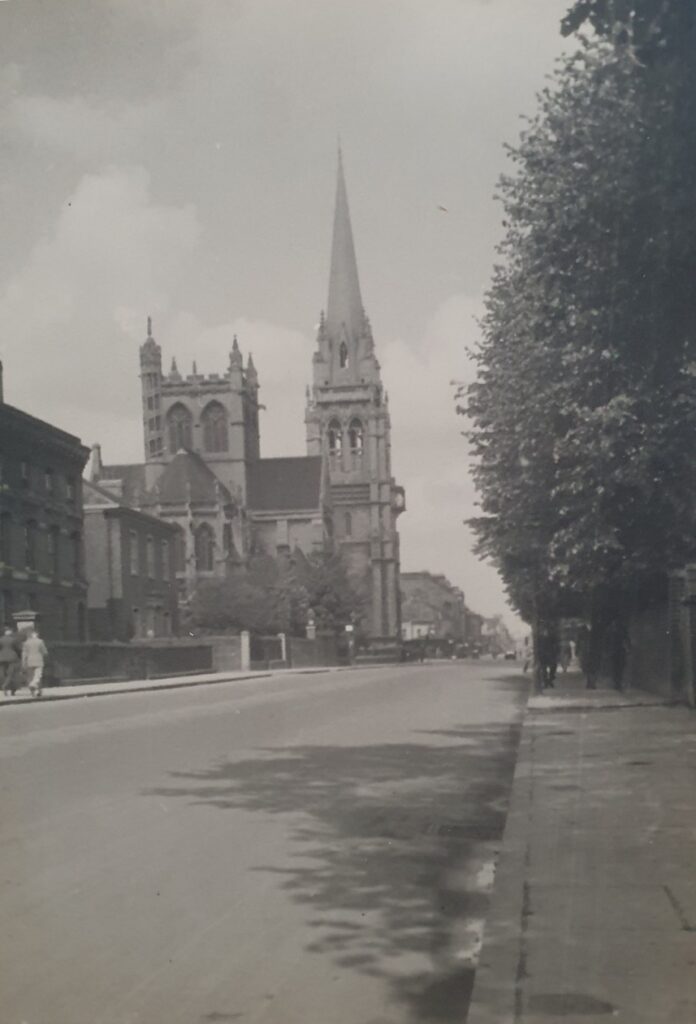
At this intersection, then, the Church stands not only as an important religious symbol, but as a cultural landmark that altered the shifting cityscape of late nineteenth century Cambridge. This is no mean feat. Residents and frequent visitors to the city will attest to the many religious buildings populating the area. From the round house Church to The Church of Our Lady and the English Martyrs, with its impressive tower stretching skywards. Through the erosion of anti-Catholic feeling, to the patronage of one of Britain’s most famous female performers, the Church of Our Lady and the English Martyrs has remained an important landmark in Cambridge and deserves all the recognition of a beloved and Grade I listed building.
If you have enjoyed this blog and wish to learn more about this and the many other historical buildings in Cambridge be sure to check out the historical mapping project Capturing Cambridge | Discover Cambridge through the ages
[1] The Church of Our Lady of the Assumption and the English Martyrs, Cambridge, Non Civil Parish – 1349061 | Historic England
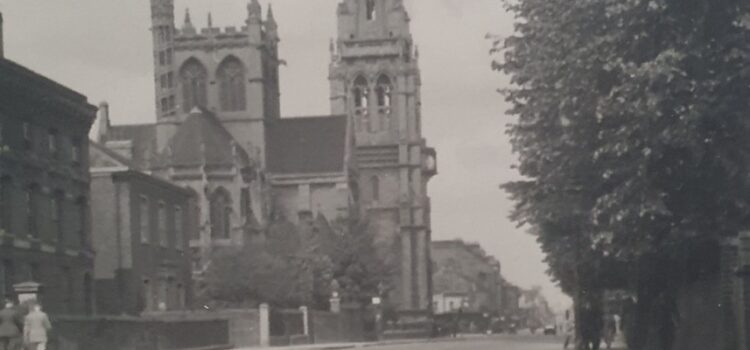
My father Fred Mansfield (1912-2004) worked all his life in the Cambridge building trade, like his father before him. He told me many stories of his experiences and those of older workmen that he had worked alongside.
One related to the building of the Catholic church. Nearing completion of the job a old workman fell off the spire. He had the presence of mind to take out a clasp knife and as he was falling thrust it into the structure. Luckily he hit a cement bonding level rather than the stone itself and arrested his fall. He hung on until rescued by workmates.
A great story but I wonder if it was a tall tale to impress or scare younger workmates and my Dad didn’t claim that he heard it directly from the lucky tradesman.
But it would be interesting to know how many fatalities occurred during the project, in those days with no Health and Safety.